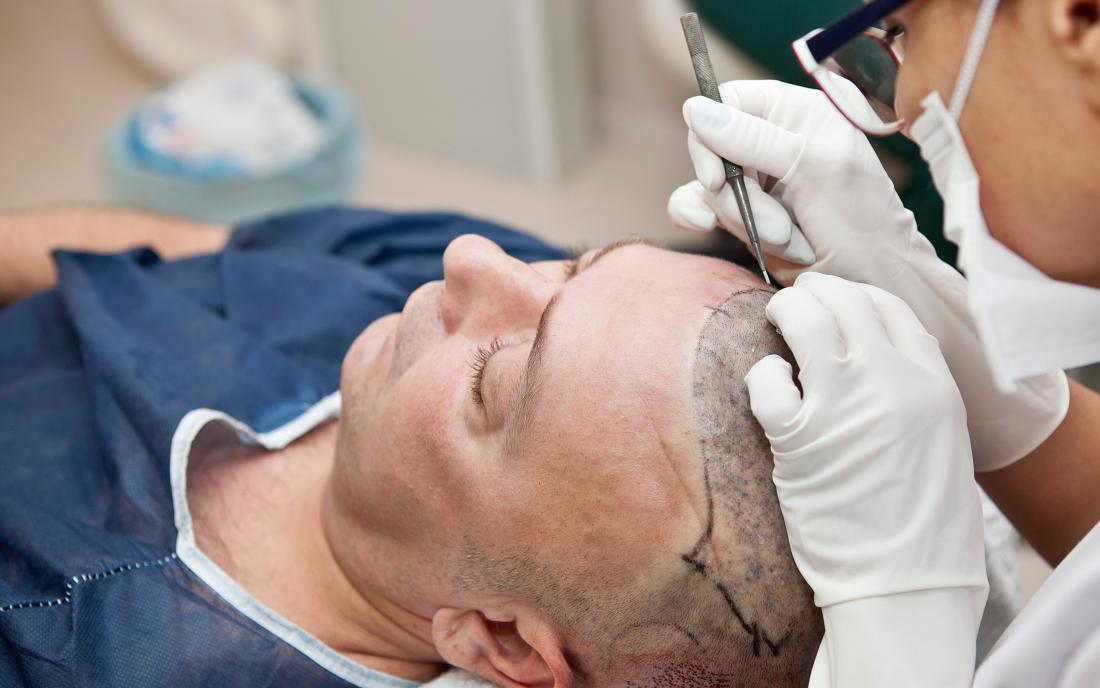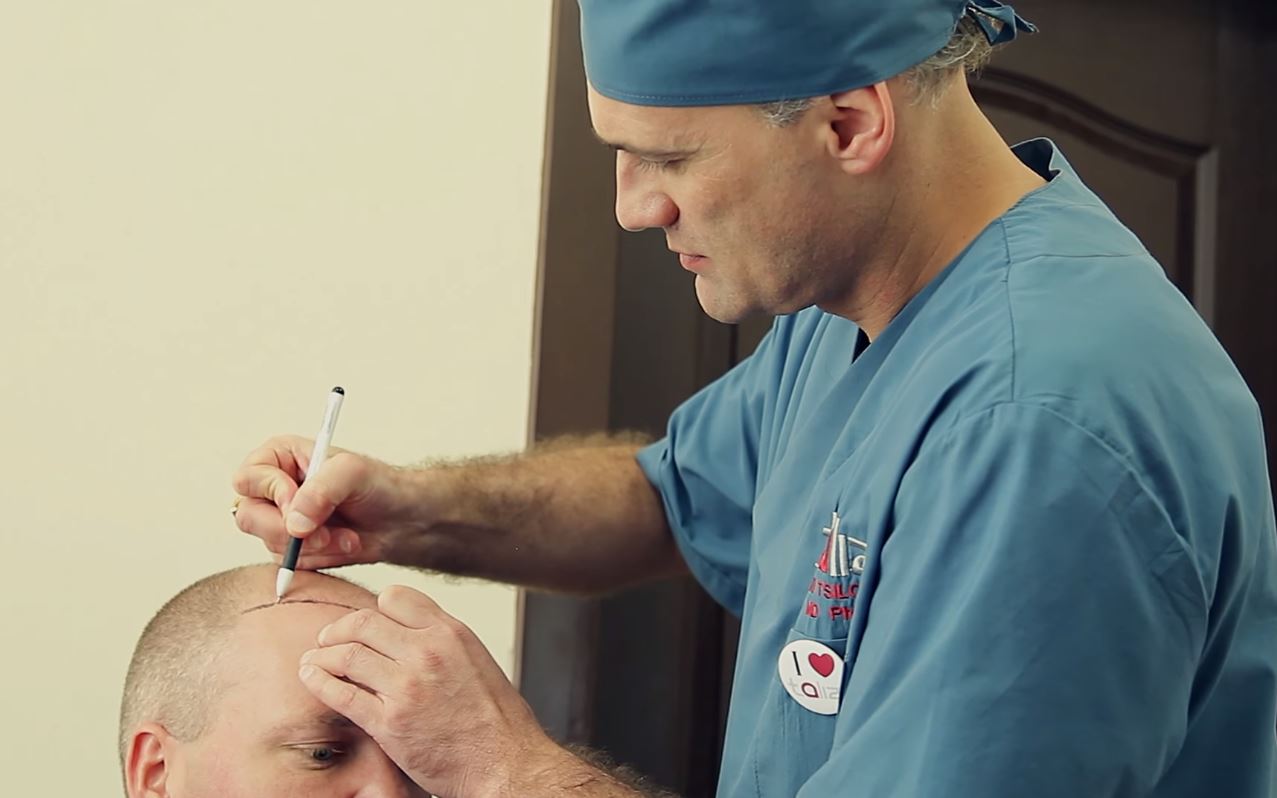Are you considering getting a hair transplant? Or have you just undergone one? Congratulations! You are on your way towards regaining your confidence and self-esteem. But as with any surgical procedure, it’s natural to wonder what happens after the operation. One of the most common questions that patients ask is whether they need to wear a head bandage after their hair transplant. In this blog post, we’ll dive into all the things you should expect after your hair transplant surgery and if wearing a head bandage is necessary for recovery. So sit back, relax and let’s explore together!
Table of Contents
Introduction to Hair Transplant
A hair transplant is a surgical procedure that involves taking hair from one area of the scalp and transplanting it to another area. The most common type of hair transplant is called follicular unit transplantation (FUT). This involves taking a strip of skin from the back of the head and then surgically removing the hair follicles and transplanting them to the balding area.
After a hair transplant, it is normal to experience some swelling, bruising, and redness. These side effects usually resolve within a week or two. You may also be required to wear a headband or scarf to protect the transplanted area from sun exposure. It is important to follow your surgeon’s instructions carefully during this time to ensure proper healing.
What is a Hair Transplant?
A hair transplant is a surgical procedure in which hair from a donor area is transplanted to a bald or thinning area. The donor area can be either the back of the head or another area of the body with thicker hair growth. Hair transplants are usually done in a single session and take several hours.
After the procedure, you will likely need to wear a headband or other type of dressing over the treated area for several days. This helps protect the newly transplanted hair follicles as they heal and start to grow new hair. You may also need to use special shampoo and other products to keep your scalp healthy and free of infection.
Before the Procedure
Before the procedure, your surgeon will clean your scalp and inject it with a local anesthetic to numb the area. You may also be given a sedative to help you relax. Your surgeon will then create tiny incisions in your scalp and carefully insert individual hair follicles into the incisions. Once all of the follicles have been inserted, the incisions will be closed with stitches or staples.
After the procedure, you will likely experience some swelling, redness, and bruising on your scalp. Your surgeon may prescribe pain medication to help you manage any discomfort. You will also need to wear a headband or scarf over your head for the first week or so to protect the transplanted follicles and help them heal properly.
 After the Procedure
After the Procedure
After the hair transplant procedure is complete, the surgeon will apply a dressing or bandage to the donor area. This is to protect the grafts and incisions while they heal. The surgeon may also place drains in the donor area to prevent fluid buildup.
You will need to keep your head elevated for the first few days after the procedure. Your surgeon will give you specific instructions on how to care for your dressings or bandages. You will likely need to return to the surgeon’s office for follow-up appointments to check on your progress and remove any stitches.
Most people can return to their normal activities within a week after a hair transplant. However, you should avoid strenuous activity or exposure to sunlight for at least two weeks after the procedure.
Do You Need to Wear a Bandage or Not?
Most hair transplant patients do not need to wear a head bandage after their surgery. Dr. Bernard Arocha will determine if you need a head bandage based on the type of hair transplant procedure you had. If you have FUT (follicular unit transplantation), also called strip surgery, you will likely need to wear a head bandage for one night. You may also need to wear a headband or compression garment around your forehead for the first week or so after surgery.
If you had an FUE (follicular unit extraction) procedure, you will not need to wear a head bandage. You may have some small Band-Aids® on your scalp where the grafts were harvested. These will be removed before you leave the office. You may also have a dressing on your donor area if your surgeon used stitches to close the incisions. This dressing will be removed before you leave the office as well.
Benefits of Wearing a Bandage After Hair Transplant
There are many benefits to wearing a bandage after a hair transplant. For one, it can help protect your grafts from damage. It can also keep your head warm and prevent you from scratching your scalp. Additionally, a bandage can help hold your transplanted hair in place as it starts to grow.
Potential Risks of Not Wearing a Bandage After Hair Transplant
After a hair transplant, it is important to keep the area clean and dry. You may be tempted not to wear a bandage, but this can increase your risk for infection. A bandage will help to keep the area clean and protected. It is important to follow your doctor’s instructions on how to care for your bandage.
How Long Will You Have to Wear a Bandage After Hair Transplant?
You will likely have to wear a bandage for at least a day or two after your hair transplant procedure. The type of bandage and how long you’ll need to wear it will depend on the extent of your surgery. If you have a small number of grafts, you may only need a light dressing. But if you have a larger transplant, you may need a heavier bandage that covers your entire head. You should follow your surgeon’s instructions on care for your bandage.
Alternatives to Headbandages
If you’re considering a hair transplant, you may be wondering about the post-operative care required. One common question is whether or not you’ll need to wear a headbandage after the surgery.
While headbandages are typically used after hair transplant surgery, there are some alternatives that can be used depending on your individual case. Your surgeon will be able to advise you on the best option for you.
Some common alternatives to headbandages include:
-Wearing a loose fitting hat or scarf
-Using cold compresses on the area
-Taking over the counter pain medication as needed

